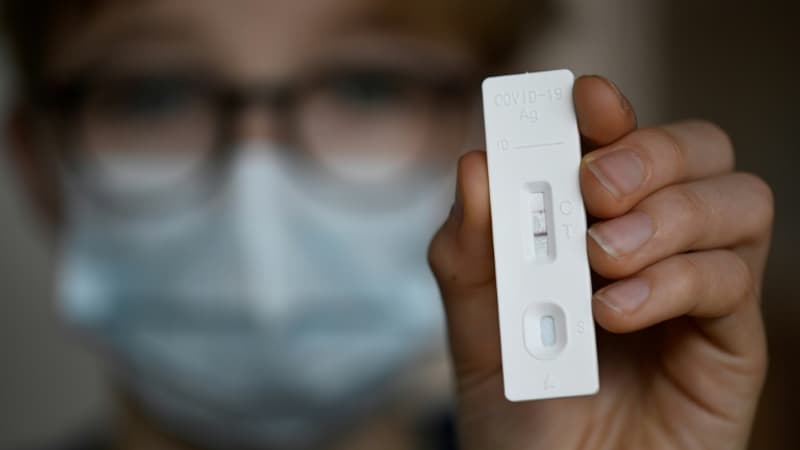The number of Covid-19 cases has been increasing in recent days, as have those of the flu. At the same time, an epidemic of bronchiolitis has been going on for several weeks in France, and other winter respiratory viruses are circulating during this period.
With all these viruses currently spreading, while barrier gestures have been neglected in recent months, the National Academy of Medicine warned in early November about the risk of “viral co-infections” – that is, being contaminated by two viruses at the same time. weather.
This topic had already been raised last winter. Several people around the world had tested positive for both Covid-19 and the flu. “Yes, it is possible to get both diseases at the same time,” the World Health Organization wrote in September 2021.
“Generally, defending against an ongoing infection protects against another infection”
However, “it is very rare that we contagion simultaneously,” argued this Wednesday on BFMTV the immunologist Brigitte Autran, president of the Committee for Monitoring and Anticipation of Health Risks (Covars). “Generally, defending against an ongoing infection protects against another infection.”
Contamination by a virus puts the body’s defenses “on alert”, explains virologist Éric Leroy to BFMTV.com. In addition to making antibodies specific to the virus that first infected you, the body also reacts less specifically, preparing it to fight other infections.
“The body’s reactivity is stronger when it is infected, this allows it to react more quickly to a new infection”, says Éric Leroy.
About 5% of coinfections
On the other hand, the virologist explains that being infected with different viruses from the same family can lead to cross immunity: being infected with a certain virus can protect you against others of the same strain.
It specifies that approximately 5% of people infected by a virus have coinfections. A study carried out in a Parisian hospital, published in July 2021, thus reported 6% of patients presenting co-infections of Covid-19 with other respiratory viruses.
So if coinfections are “not rare phenomena, they are infrequent”, declares the virologist.
Coinfections affect “particularly people who do not develop sufficiently strong immune responses, or even immunocompromised people,” explains the virologist.
Éric Leroy also points out that he has already observed even rarer cases of patients infected with three or even four viruses.
Risks of aggravated infections?
Currently it is difficult to assess the danger that a coinfection can represent. Sometimes it has a beneficial effect, sometimes a harmful effect. “It is so rare that we lack reliable data, we have no answer to this question,” he had stated in this way last January with the Parisian infectologist Olivier Bouchaud, head of the department of infectious and tropical diseases at the Avicenne hospital (Seine-Saint-Denis).
“Co-infections can lead to viral interference, a virus limiting or suppressing the replication of the second virus,” the researchers wrote in the July 2021 study, but they also “worsen disease severity compared with monoinfection.”
Due to the current epidemics, caregivers have reminded in recent days that the mask is effective in limiting the spread of Covid-19, but also flu and bronchiolitis, as well as barrier gestures. They also call for eligible people to get vaccinated against Covid-19 and flu.
Source: BFM TV


